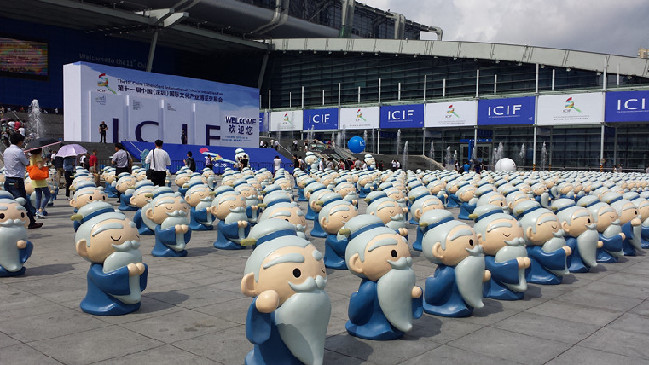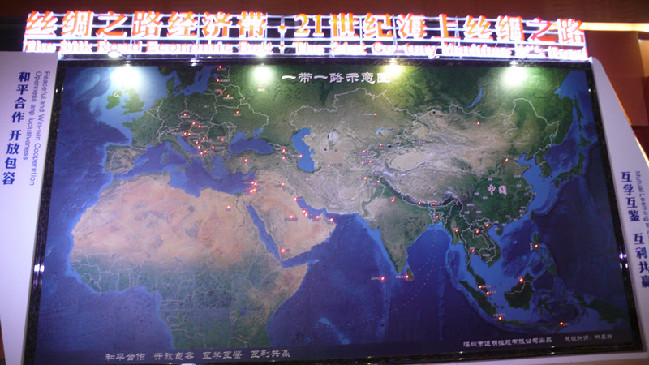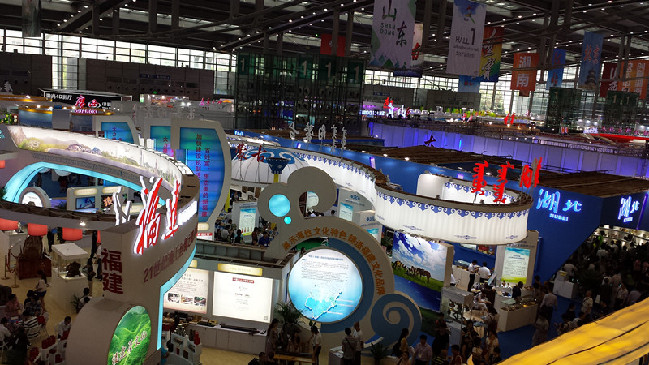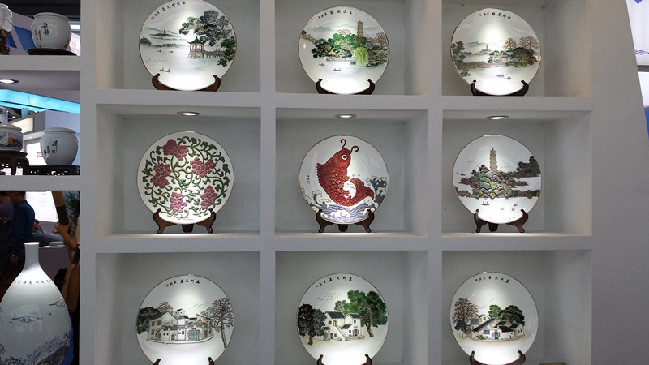Dear Friends, Apa Kabar! Good morning. It gives me great pleasure to come to the People’s Representative Council of Indonesia and meet all the friends here. I am visiting Indonesia, known as “country of thousands islands”, at the invitation of President Susilo Bambang Yudhoyono. This is the first leg in my current visit to Southeast Asia. It is a journey for carrying forward traditional friendship and also for planning future cooperation.
I visited Indonesia 20 years ago, during which I personally experienced the development, colorful scenery and diversified culture of Indonesia. How time flies. But what I saw 20 years ago is still vivid in my mind, as if it only happened yesterday. As I set foot on this beautiful land again this time, I am even more impressed by the robust vitality of our bilateral relations and the profound friendship  between the two peoples. In recent years, under the leadership of President Yudhoyono, the Indonesian people have pulled together, made tremendous efforts and achieved success in economic development, social stability and growing national strength. I sincerely wish the Indonesian people further success in forging a better future through hard work and creativity.
between the two peoples. In recent years, under the leadership of President Yudhoyono, the Indonesian people have pulled together, made tremendous efforts and achieved success in economic development, social stability and growing national strength. I sincerely wish the Indonesian people further success in forging a better future through hard work and creativity.
Ladies and Gentlemen: Dear Friends, China and Indonesia face each other across the sea. The friendly ties between us have a long history. Together, our peoples have composed one piece after another of beautiful music about their exchanges and interactions over the centuries. Just as the Indonesian folk song Bengawan Solo, a household musical piece in China, goes “Your water springs forth from Solo, caged by a thousand mountains. Water flows to reach far distances, eventually to the sea.” Like the beautiful river Solo, China-Indonesia relations have traversed an extraordinary journey, past mountains and eventually to the sea. As early as the Han Dynasty in China about 2,000 years ago, the people of the two countries opened the door to each other despite the sea between them. In the early 15th century, Zheng He, the famous Chinese navigator of the Ming Dynasty, made seven voyages to the Western Seas. He stopped over the Indonesian archipelago in each of his voyages and toured Java, Sumatra and Kalimantan. His visits left nice stories of friendly exchanges between the Chinese and Indonesian peoples, many of which are still widely told today.
Over the centuries, the vast oceans have served as the bond of friendship connecting the two peoples, not a barrier between them. Vessels full of goods and passengers travelled across the sea, exchanging products and fostering friendship. A Dream of Red Mansions, a Chinese classic novel, gives vivid accounts of rare treasures from Java. The National Museum of Indonesia, on the other hand, displays a large number of ancient Chinese porcelains. All these bear witness to the friendly exchanges between the two peoples. And they are convincing interpretation of the Chinese saying that “A bosom friend afar brings a distant land near.” Our two peoples sympathized with and supported each other in their respective struggle for national independence and liberation in the last century. Indonesia was among the first countries to establish diplomatic ties with the People’s Republic of China after its founding in 1949. In 1955, China and Indonesia, together with other Asian and African countries, jointly initiated the Bandung spirit at the Bandung Conference. With the principles of peaceful coexistence and seeking common ground while shelving differences at its core, the Bandung spirit remains an important norm governing state-to-state relations, and has made indelible contribution to the building of new international relations. Our two countries resumed diplomatic ties in 1990 and established a strategic partnership in 2005, which marked the start of a new phase in the growth of our bilateral relations.
Ladies and Gentlemen: Dear Friends, During my current visit, President Yudhoyono and I have jointly announced our decision to upgrade our bilateral relations to a comprehensive strategic partnership, with a view to building on past achievements and bringing about all-round and in-depth growth of our relationship. The growing mutual trust between the two countries has put our bilateral relations on a more solid political basis. Our practical cooperation has expanded from such traditional areas as economy, trade, finance, infrastructure, energy, resources and manufacturing to include new fields such as space and maritime affairs. Our wide-ranging cooperation, from space to ocean, has delivered tangible benefits to the two peoples. The Surabaya –Madura Bridge, a China-Indonesia joint project, is the longest cross-sea bridge in Southeast Asia. The cooperation project of Jatigede Dam is about to finish. Once completed, it will have an irrigation area of 90,000 hectares, which will greatly facilitate the work and life of the local people. We have enhanced our cooperation on major regional and international issues. Our relations have increasingly gained regional and international influences. All this is of positive significance to the building of a more just and equitable international political and economic order. All these are important landmarks of China-Indonesia friendship in the new era.
People in Indonesia often say, “It’s easy to make money but difficult to make friends.” The sincere friendship between the Chinese and Indonesian people is indeed our cherished, priceless treasure. On 26 December 2004, a sudden massive earthquake of magnitude 9 hit the once tranquil Indian Ocean and triggered a large tsunami. The whole world was shocked to see Aceh of Indonesia suffering huge losses of life and property. After the tsunami, China immediately activated the emergency response mechanism and announced on the day of the earthquake that it would provide assistance to Indonesia and other disaster-affected countries. It became the largest overseas rescue and relief operation that China had ever launched after the founding of the People’s Republic. Trucks carrying relief supplied were given green lights all the way and rushed from factories to airport, and airplanes, loaded with the love and sympathy of the Chinese people toward the Indonesian people, flew to Aceh and other disaster-hit areas. The Chinese international rescue team was the first foreign team to arrive at Aceh. They provided medical treatment to over 10,000 victims in a short span of 13 days. Many local people learned to speak Chinese and hailed members of the Chinese rescue team in Chinese, “zhongguo, beijing, wo ai ni”(China, Beijing, I love you.)
The Chinese people, too, offered their sympathy and assistance in a variety of ways to the Indonesia people hit by the disaster. An old man in Hangzhou, who was not rich himself as his wife was hospitalized for a long time and he himself had just gone through a surgery, donated 1,000 yuan of his hard earned money to Indonesian kids in disaster-affected areas for their continued schooling. The donation, though not a bit sum, speaks to the profound goodwill of the Chinese people to the Indonesian people. Likewise, the Indonesian people have extended a helping hand when the Chinese people experienced major natural disasters. On 12 May 2008, a massive earthquake hit Wenchuan, China. People in the affected areas were in dire need of assistance and relief. Indonesia responded immediately and sent its medical team to quake-hit areas. As soon as it arrived, the Indonesian medical team worked around the clock in spite of the many aftershocks. They treated 260 earthquake victims and provided  free medical treatment to 844 local residents and 120 students. Before returning to Indonesia, they donated all their valuable belongings to the quake-affected areas. Back in Indonesia, people made donations both in cash and kind to the quake-stricken Wenchuan. Some Indonesians personally visited the Chinese Embassy in Indonesia to express their prayers and blessings to the people in Wenchuan. What they did has deeply moved the Chinese people. There are countless touching stories like these about friendly ties between our peoples. They are all examples of what is captured by one common proverb in both the Chinese and Indonesian languages, namely “going through thick and thin together”.
free medical treatment to 844 local residents and 120 students. Before returning to Indonesia, they donated all their valuable belongings to the quake-affected areas. Back in Indonesia, people made donations both in cash and kind to the quake-stricken Wenchuan. Some Indonesians personally visited the Chinese Embassy in Indonesia to express their prayers and blessings to the people in Wenchuan. What they did has deeply moved the Chinese people. There are countless touching stories like these about friendly ties between our peoples. They are all examples of what is captured by one common proverb in both the Chinese and Indonesian languages, namely “going through thick and thin together”.
Ladies and Gentlemen: Dear Friends, China and ASEAN countries are linked by common mountains and rivers and share a historical bond. This year marks the tenth anniversary of the China-ASEAN strategic partnership. Our relationship now stands at a new historical starting point. China places great importance on Indonesia’s status and influence in ASEAN. China wishes to work with Indonesia and other ASEAN countries to ensure that China and ASEAN are good neighbors, good friends and good partners who would share prosperity and security and stick together through thick and thin. By making joint efforts, we will build a more closely-knit China-ASEAN community of common destiny so as to bring more benefits to both China and ASEAN and to the people in the region. To that end, we should focus our efforts in the following areas:
First, build trust and develop good-neighborliness. Trust in the very foundation of both interpersonal and state-to-state relations. China is committed to a relationship of sincerity and friendship with ASEAN countries and to enhanced mutual political and strategic trust. There is no one-size-fits-all development model in the world or an unchanging development path. Both the Chinese people and people in ASEAN countries have embraced change and innovation with an open mind, and explored and found, in a pioneering and enterprising spirit, development paths in light of their specific national conditions that conform to the trend of times. All these efforts have opened up a broad prospect for their economic and social development. We should respect each other’s right to independently choose social system and development path as well as each other’s efforts to explore and pursue economic and social development, and improve people’s lives. We should have full confidence in each other’s strategic direction, support each other on issues of major concern, and never deviate from the general direction of China- ASEAN strategic cooperation. China is ready to discuss with ASEAN countries the prospect of concluding of a treaty of good-neighborliness, friendship and cooperation in a joint effort to build good-neighborly relations. China will continue to support ASEAN in growing its strength, building ASEAN community and playing a central role in regional cooperation.
Second, work for win-win cooperation. As a well-known Chinese saying goes, “The interests to be considered should be the interests of all,” China is ready to open itself wider to ASEAN countries on the basis of equality and mutual benefit to enable ASEAN countries to benefit more from China’s development. China is prepared to upgrade the China-ASEAN Free Trade Area and strive to expand two-way trade to one trillion US dollars by 2020. China is committed to greater connectivity with ASEAN countries. China will propose the establishment of an Asian infrastructure investment bank that would give priority to ASEAN countries’ needs. Southeast Asia has since ancient times been an important hub along the ancient Maritime Silk Road. China will strengthen maritime cooperation with ASEAN countries to make good use of the China-ASEAN Maritime Cooperation Fund set up by the Chinese government and vigorously develop maritime partnership in a joint effort to build the Maritime Silk Road of the 21st century. China is ready to expand its practical cooperation with ASEAN countries across the board, supplying each other’s needs and complementing each other’s strengths, with a view to jointly seizing opportunities and meeting challenges for the benefit of common development and prosperity.
Third, stand together and assist each other. China and ASEAN countries are as close as lips and teeth. We share the responsibility for regional peace and stability. Historically, the people of China and ASEAN countries had stood together through thick and thin in the fight to take our destiny back into our own hands. In recent years, our peoples have stood side by side and forged strong synergy in responding to various crises from Asian financial crisis to the international financial crisis, and from the Indian Ocean tsunami to China’s Wenchuan earthquake. We should cast away the Cold War mentality, champion the new thinking of comprehensive security, common security and cooperative security and jointly uphold regional peace and stability. We should deepen cooperation in disaster prevention and relief, cyber security, combating cross-border crimes and joint law enforcement to create a more peaceful, tranquil and amicable home for the people in the region. China is ready to work with ASEAN countries to improve China-ASEAN defense ministers’ meeting mechanism and hold regular dialogues on regional security issues. With regard to differences and disputes between China and some Southeast Asian nations on territorial sovereignty and maritime rights and interests, peaceful solutions should be sought, and differences and disputes should be properly handled through equal-footed dialogue and friendly consultation in the overall interests of bilateral ties and regional stability.
Fourth, enhance mutual understanding and friendship. Just as a Chinese saying goes, “A big tree grows from a small seedling; and a nine-storeyed tower is built out of soil.” To ensure that the tree of China-ASEAN friendship remains evergreen, the soil of social support for our relations should be compacted. Last year saw 15 million people traveling between China and ASEAN countries with over 1,000 flights between the two sides each week. Increased interactions have nurtured deeper bonds between us and enabled our people to feel ever closer to each other. We should encourage more friendly exchanges between youth, think tanks, parliaments, NGOs and civil organizations of the two sides, which in turn will generate more intellectual support to the growth of China-ASEAN relations and help increase the mutual understanding and friendship between our peoples. China is ready to send more volunteers to ASEAN countries to support their cultural, educational, health and medical development. China has proposed to set 2014 as the year of China-ASEAN cultural exchanges. In the coming three to five years, china will offer ASEAN countries 15,000 government scholarships.
Fifth, stick to openness and inclusiveness. The sea is big because it admits all rivers. In the long course of human history, the people of China and ASEAN countries have created splendid and great civilizations renowned around the world. Ours is a diversified region. Various civilizations have assimilated and interacted with one another under the influence of different cultures, which affords and important cultural foundation for the people China ASEAN countries to learn from and complement one another. We should draw upon the experience of other regions in development and welcome a constructive role by non-regional countries in the development and stability of the region. At the same time, these, non-regional countries should respect the diversity of the region and do more to facilitate regional development and stability. The China-ASEAN community of shared destiny is closely linked with the ASEAN community and the East Asia community. The two sides need to bring out their respective strengths to realize diversity, harmony, inclusiveness and common progress for the benefit of the people of the region and beyond. A more closely knit China-ASEAN common destiny conforms to the trend of the times for seeking peace, development, cooperation and mutual benefit, and meets the common interests of the people of Asia and the world, hence enjoying a broad space and huge potential of growth.
Ladies and Gentlemen: Dear Friends, Since the founding of the People’s Republic of China over 60 years ago, in particular the launch of reform and opening-up over 30 years ago, China has blazed a successful path of development and made tremendous progress. China has laid out a strategic plan and set clear goals for its future development, namely, to double its 2010 GDP and per capita income of its urban and rural residents and finish the building of a moderately prosperous society in all respects by 2020; and turn China into a modern socialist country that is prosperous, strong, democratic, culturally advanced and harmonious and realize the great renewal of the Chinese nation by the middle of this century. This is a dream that has long been cherished by the Chinese nation and people. It is also a prerequisite for China to make even greater contribution to mankind. As an ancient Chinese maxim goes, “only with high ambition and hard work can one make great achievements.” We have the confidence, conditions and capabilities to attain our goals. Having said that, we are soberly aware that China remains the largest developing country in the world. We still face many difficulties and challenges on the way ahead. For all the Chinese people to enjoy a happy life, we have to make unrelenting efforts for a long time to come. We will firmly stay on the course of reform and opening-up, adhere to the path of socialism with Chinese characteristics, focus on managing our own affairs well, press ahead with modernization and improve people’s wellbeing. China cannot achieve development in isolation from the world, and the world also needs China for development. China is fully committed to the path of peaceful development, the independent foreign policy of peace and the opening-up strategy for win-win results. A stronger China will add to the force for world peace and the positive energy for friendship, and will present development opportunities to Asia and the world, rather than posing a threat. China will continue to share opportunities for economic and social development with AESAN, Asia and the world.
Ladies and Gentlemen: Dear Friends, The Chinese people are working hard to realize the Chinese dream for the great renewal of the Chinese nation. And here, the Indonesian people are vigorously implementing their overall economic development plan for the rise of Indonesian nation. To realize our respective dreams, it is all the more necessary for both sides to understand, support and cooperate with each other, and for more people of vision in both countries to get involved and make effective efforts to this end.
In this connection, I recall the song Hening(Silence) composed by President Yudhoyono. In October 2006, he came to Guangxi, China for the commemorative summit marking the 15th anniversary of China-ASEAN dialogue relations. On the Lijiang River, President Yudhoyono was overwhelmed by inspiration and wrote down these beautiful lyrics. “The beautiful days I spend with my friends have kept recurring in my life.” The mountains and rivers in China deeply touched President Yudhoyono and reminded him of his childhood and hometown. This shows just how strong the bond and affinity are between our two peoples.
Amity between people holds the key to good relations between nations. It is through the efforts of these envoys of friendship who have built bridges of friendship and opened windows to sincere understanding that the friendship between our two peoples has been everlasting and has grown stronger and more robust as time goes by. Young people are full of dynamism and dreams. When the young prosper and are strong, the country will prosper and be strong. Young people represent the future and hope for exchanges between the two countries. President Yudhoyono and I have agreed that the two countries will expand and deepen cultural and people-to-people exchanges. In the next five years, each side will send 100 young people to visit the other every year, and China will provide 1,000 scholarships to Indonesia.
I am convinced that with more and more young people involved in the building of friendship between the two countries, China-Indonesia friendship will flourish and pass on from generation to generation.
Ladies and Gentlemen:
Dear Friends,
China and Indonesia have a combined population of 1.6 billion. As long as our two peoples work hand in hand with one heart and one mind, we will pool the huge strength of one fourth of mankind and be able to create new miracles in the history of human development. Let our two peoples join hands, write a new chapter in growing our bilateral relations, work for a bright future for the China-ASEAN community of shared destiny, and make greater contribution to the lofty cause of world peace and development.
Terima Kasih!(Thank you!)
(2 October 2013, Jakarta, Indonesia / Source:Asean China Center)




You need to be a member of Iconada.tv 愛墾 網 to add comments!
Join Iconada.tv 愛墾 網